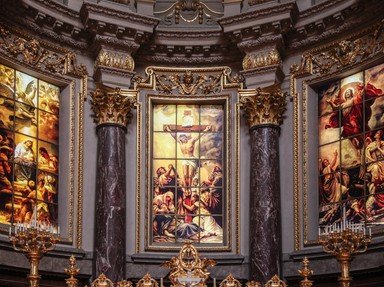Quiz Answer Key and Fun Facts
1. Which animal is said to have nursed Saint Ailbe when he was abandoned behind a rock and left to die as a baby?
2. When a huntsman witnessed Saint Neot's protection of a deer from hounds the experience motivated him to do which of the following?
3. Who is recognized today as the Celtic patroness of animals and nature?
4. Bird omens were highly significant to pagan Celts and the tradition was continued by Christian priests who believed them to carry messages from God.
5. While on a stag hunt Conmore (Count of Poher) witnessed the beast suddenly stop and the hounds declined to kill it. What was the reason for the animals' unusual behavior?
6. As her death drew near, Saint Endelienta requested that her body be placed on a cart drawn by oxen and buried in a spot of the oxen's choosing.
7. After killing a stag on a hunt, Fingar, unable to find water to wash the blood from his hands, randomly thrust his spear into the ground. Fresh water spurted forth and he saw an inspiring vision in the clear water. What was it?
8. Known as the epitome of kindness and charity to people as well as animals, who is venerated as one of Ireland's Patron Saints, along with Saint Patrick and Saint Columba, and also Patroness of kitchens and ale brewing?
9. Before his conversion, Saint Aelhaiarn, whose name means "the iron eyebrow", was a servant killed by a pack of wild animals and resurrected.
10. Saint Gwynllyw gave up his life as a robber baron to become a monk. Once he saw an ox, which he perceived to be an omen. What was unusual about the ox that inspired the future site of his monastery?
Source: Author
sally0malley
This quiz was reviewed by FunTrivia editor
agony before going online.
Any errors found in FunTrivia content are routinely corrected through our feedback system.

